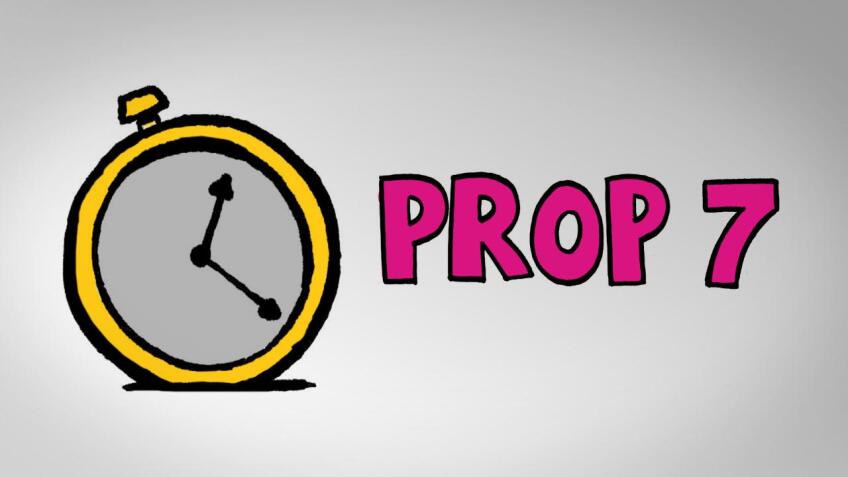Prop 7: Daylight Saving Could Become Permanent
This proposition passed.
Encuentra la versión en español aqui

Sponsored by Sheppard Mullin, a full service, global law firm with 750 attorneys. The firm handles corporate and technology matters, high stakes litigation and complex financial transactions.
What? | |
| Sets Daylight Saving Time as year round. | |
Why? | |
Assemblyman Kansen Chu, who introduced it, suggests that passing Prop 7 will improve sleep and make Californians happier. | |
Vote Yes
| Vote No
|
| Supports Legislature in establishing permanent, year-round daylight saving time in California by a two-thirds vote if federal law permits it. | Opposes Legislature in establishing permanent, year-round daylight saving time in California by a two-thirds vote if federal law permits it. |
California and Florida already have asked Congress to allow year-round DST, but getting there will require what Gov. Jerry Brown called, "a circuitous path." The Legislature and Brown had to seek voter approval because the twice-yearly time changes were enacted by popular vote in 1949. If Prop 7 passes, it will "encourage" a two-thirds majority vote in the Legislature for year-round DST, which will still require approval by Congress, plus signatures of the governor and president.
Some opponents of DST find the time changes in March and November disruptive to their sleep and the routine of putting children to bed, and some therefore would be happy with either standard time or DST year-round. The Legislature and Brown had to seek voter approval because the twice-yearly time changes were enacted by popular vote in 1949. California could have year-round standard time, like Arizona does, without congressional approval. Other opposing DST include farmers and traffic safety advocates, who note that it delays winter sunrise time enough that children walk to school in the dark in December.
The Legislature voted by large majorities to refer the ballot issue to voters. There have been no fundraising campaigns for or against the measure. If Prop 7 passes but Congress lacks the interest, will or time to go along with it, nothing changes. Or, one commentator noted, the theoretical (probably farfetched) end result of repealing statewide time changes could be three time zones in California, with year-round DST, part-year DST and year-round standard time in different regions.
Click here for a printable version of all the propositions on the November ballot.
No Campaign Contributions Made






